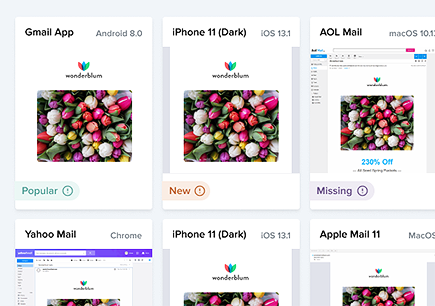There’s no doubt the last few years have dramatically changed not only the way people shop, but also how they prefer to hear from brands. It’s becoming increasingly important for marketers to understand ways to bridge digital channels for an omnichannel brand experience to better attract and retain customers.
Omnichannel marketing is not just smart marketing, it’s also what people want. In a recent survey, 56% of consumers say they are more likely to shop with retailers that offer a shared shopping cart across channels. This means no matter how they are getting to your site, they can access the same cart with all of their items, creating happy customers and smooth transactions.
However, only 7% of retailers offer this capability, creating a massive amount of lost opportunity. While the concept of omnichannel marketing is not new, it’s imperative to consider how all of your digital marketing channels are working together harmoniously toward common goals. With recent data showing that almost 80% of online carts are abandoned (an alarming statistic) the need for consistent and timely messaging allows you to see what’s working, where you can improve, and be able to track attribution across channels and platforms.
How email fits into the omnichannel puzzle
For most marketers, email continues to be the cornerstone of any strong omnichannel marketing strategy due to its effectiveness and ability to continue to produce an impressive return on investment (ROI). In fact, for every $1 spent on your email marketing strategy, you can expect to see $36 in return.
Email is flexible. It can be easily tested, offers an abundance of targeting capabilities, and can help you gain insights about your subscribers – and your audience as whole.
Email is consistently effective. Having a good email marketing strategy also allows you to seamlessly integrate with other channels to improve the customer experience throughout the buying journey.
Email provides a unique perspective. Due to the fact that subscribers have opted to receive your communication, they are more inclined to provide details about their shopping behaviors, product preferences, and customer profile information.
Getting more from your email campaigns
Because of this, it’s important to focus on how you can get more from your email campaigns to fuel your other channels and platforms, helping to create a more holistic approach and seamless messaging. When email campaigns are properly executed, they can unlock data about your subscribers that can help better tailor your messaging across all digital channels.
By knowing and understanding different email strategies, you can work to create campaigns that get more data from your subscribers – which benefits you and them.
Here are a few key tactics and the insights you can expect from each:
Direct communication
Unlike other channels, email gives you direct access to your customers. It doesn’t get much better than that! Based on permissions provided when they subscribed and their past activities, shopping habits, etc., you can create personalized emails through segmentation and dynamic content. By doing so, you are more likely to have higher engagement which results in more subscriber data you can use elsewhere and ultimately, more conversions.
Brand community
While some subscribers joined your email list for a coupon code (and who hasn’t), they stay when they feel like they are part of a community. And once they are hooked, leaving that sense of belonging, especially if it’s been ongoing for years, is hard to do.
Getting more buy-in for your brand can be best facilitated through email. Using campaigns to develop true brand enthusiasts will improve the customer experience and cultivate people who will help you reach new customers based on their experience. This can be seen in particular across social channels as these shoppers are more likely to share more about your brand, further boosting your efforts without additional effort – or ad dollars – from you.
Interactive content
Subscribers love to feel like they are part of the action (i.e. see community above), and incorporating interactive email content not only boosts engagement and excitement, but also helps strengthen CRM profiles. Incorporating dynamic content such as: interactive polling to include subscribers in the brand experience, countdown timers to create urgency, or social signals to add real social proof to a product’s popularity gives subscribers a way to have fun with email content.
By carefully tracking and noting selections made, you can develop a more complete customer profile. This not only helps adjust your other digital channels, but also helps with Lookalike Audiences, or a new ad-targeted audience that shares characteristics with your existing ones, based on previous engagements with your business or ads. These are particularly effective across social platforms to broaden your customers and subscriber base.
Closing the loop
In an omnichannel marketing strategy, it’s important to focus on how all channels are working independently and collectively to achieve your business goals. The beauty of email is it works just about anywhere in the customer funnel to complement your omnichannel strategy. A well planned email marketing strategy can be a powerful tool to learn more about your audience and funnel that data to drive optimizations across all digital channels and is fundamental to your omnichannel success.
 |
Ensure your designs come across right Broken emails lead to less conversions. Preview your emails across 100+ email clients, apps, and devices to ensure an on-brand, error-free subscriber experience. Every time. |
Source link



